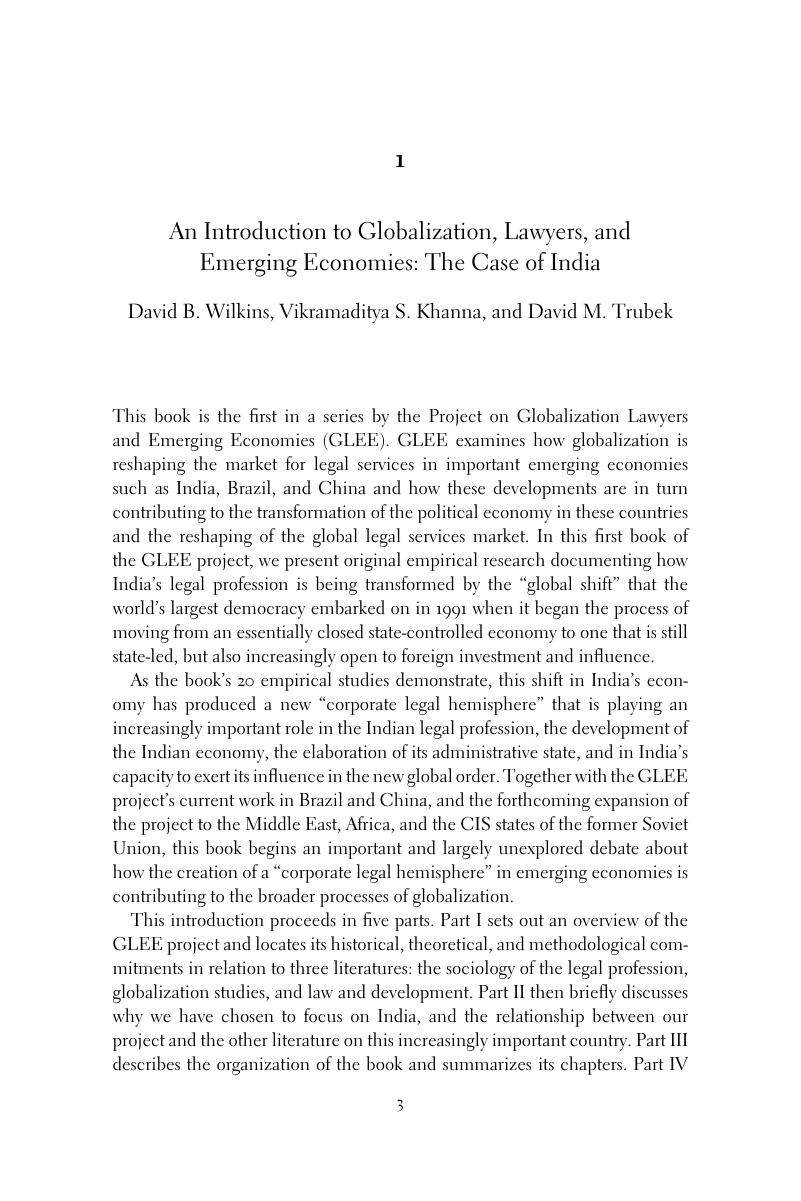 The Indian Legal Profession in the Age of Globalization
The Indian Legal Profession in the Age of Globalization Book contents
- The Indian Legal Profession in the Age of Globalization
- The Indian Legal Profession in the Age of Globalization
- Copyright page
- Dedication
- Contents
- Contributors
- Acknowledgments
- Section I Setting the Stage
- 1 An Introduction to Globalization, Lawyers, and Emerging Economies:The Case of India
- 2 Overview of Legal Practice in India and the Indian Legal Profession
- Section II The Growth of the Corporate Core
- Section III New Actors and Functions within the Corporate Core
- Section IV Regulation and Foreign Competition
- Section V Old Lawyers, New Lawyers, and Transforming Roles
- Section VI Legal Education
- Section VII Capacity Building
- Index
- References
1 - An Introduction to Globalization, Lawyers, and Emerging Economies: The Case of India
from Section I - Setting the Stage
Published online by Cambridge University Press: 25 May 2017
- The Indian Legal Profession in the Age of Globalization
- The Indian Legal Profession in the Age of Globalization
- Copyright page
- Dedication
- Contents
- Contributors
- Acknowledgments
- Section I Setting the Stage
- 1 An Introduction to Globalization, Lawyers, and Emerging Economies:The Case of India
- 2 Overview of Legal Practice in India and the Indian Legal Profession
- Section II The Growth of the Corporate Core
- Section III New Actors and Functions within the Corporate Core
- Section IV Regulation and Foreign Competition
- Section V Old Lawyers, New Lawyers, and Transforming Roles
- Section VI Legal Education
- Section VII Capacity Building
- Index
- References
Summary

- Type
- Chapter
- Information
- The Indian Legal Profession in the Age of GlobalizationThe Rise of the Corporate Legal Sector and its Impact on Lawyers and Society, pp. 3 - 39Publisher: Cambridge University PressPrint publication year: 2017
References
- 2
- Cited by
